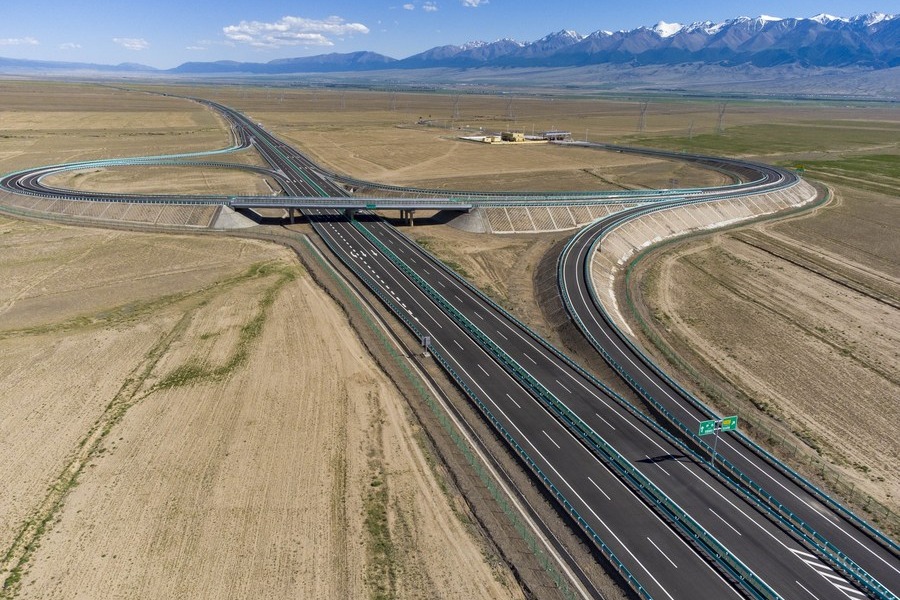China needs robust water network to withstand all weathers


The third plenary session of the 20th Central Committee of the Communist Party of China from July 15 to 18, underscored the critical importance of addressing climate change.
Extreme weather events are growing more frequent, as partly evidenced by this summer. And climate change is posing unprecedented challenges to global water security. In recent years, extreme weather events have been causing havoc in many parts of China, posing a big challenge to the country’s disaster prevention and mitigation efforts. Therefore, China needs to urgently build a national water network to save water as well as ensure the regular supply of water.
The central authorities issued an outline last year to establish a national, integrated water network by 2035 to better manage water resources, including optimized allocation of water resources, flood control and disaster mitigation , and conservation of water ecosystems.
To effectively plan and establish a national water network, China needs to conduct in-depth research into water networks, improve water allocation, mitigate regional water scarcity, devise and implement a comprehensive plan to save water, and build multi-level local water networks. It also needs to assess the impacts of a national water network on the ecology and environment, better safeguard underground water tables, and use new technologies such as a “digital twin” system to improve water resource management.
First, remote sensing of water resources should form the basis of the construction of a national water network amid the increasing impacts of climate change. The proposed national water network should be built based on the nature and characteristics of rivers and lakes, water channels, regulation and storage projects, and intelligent regulation. The water network should be a comprehensive system combining judicious allocation of water, mitigation of disasters, and conservation of water sources.
Also, an in-depth understanding of the conditions of rivers, lakes and other water bodies, and water conservancy projects will help build an exhaustive national water network. Thanks to the development of satellites, remote sensing of water sources has been playing a key role in water conservancy. But the remote sensing technology still faces problems such as inaccurate identification of water bodies, faulty underwater geo-positioning, and non-application of water quality inversion models. Hence, China needs to adopt technologies such as satellite remote sensing, ground-based monitoring, the internet of things and big data to establish a system that covers water bodies, underwater topography, and remote sensing of water volume. This will allow the country to collect and analyze accurate information for building a national water network.
Such technologies will not only provide key information for the central authorities, but also reflect the impacts of water resources, and the environment and ecology on society as a whole, which in turn will help the authorities to improve water resource management. A key technological advancement is the Huashui-1 Satellite, China’s first inland water remote sensing satellite. Developed by North China University of Water Resources and Electric Power and Changguang Satellite Technology Co., Ltd., this high-resolution, multi-mode satellite captures sub-meter resolution images and monitors rivers, lakes, and seas. It provides critical data for managing water resources, environment, ecology, and disasters, enhancing the ability to protect water resources efficiently.
Second, a three-dimensional water scarcity assessment can provide vital technological support for the construction of a national water network. Water scarcity is one of the most serious problems facing the world. Globally, about 4 billion people, or about half the world’s population, are exposed to water stress for at least one month of the year, according to a 2023 report by the World Resources Institute. In 2022, a report by the Intergovernmental Panel on Climate Change (IPCC) estimated that 42-79 percent of the world’s hydrographic basins would be critically affected from now to 2050, considerably impacting freshwater ecosystems and the capacity of reservoirs to provide an undisrupted supply of water.
Water scarcity is also the main reason why China should build a national water network. In the past, Chinese scholars, as well as scholars from other countries, focused only on the water volume, not on the water quality and ecological demand of aquatic ecosystems, when assessing water scarcity. In the future, they should attach importance to water volume and water quality as well as environmental flows, while taking measures to reduce water pollution and restore degraded water ecosystems to ensure a smooth supply of water. Only when the three-dimensional water scarcity assessment framework is taken into consideration can they provide more comprehensive policy recommendations to the government to address the water problems.
Third, the authorities should implement measures to restore rivers and lakes with a framework of stepwise ecological restoration. By gradually restoring damaged ecosystems, the authorities can help rehabilitate rivers and lakes not only in China but also around the world to as close to their original condition as possible. This stepwise approach should include assessing the current state of the water bodies, identifying the primary sources of degradation, and implementing targeted restoration projects such as environmental remediation, habitat reconstruction, and natural recovery. By developing key technologies for stepwise ecological restoration and intelligent monitoring aimed at the ecological recovery of rivers and lakes, China can lead global ecological conservation efforts and set a model for other nations. Additionally, international collaboration and knowledge exchange in ecological restoration techniques can further enhance these efforts, contributing to global improvements in water ecosystem health.
Furthermore, gradually restoring the degraded ecosystems can promote green development. The restoration of the water ecosystems will improve the ecological environment, enhance land value and soil health, promote the development of ecological tourism, and facilitate the sustainable development of the proposed national water network.
In summary, the necessity of a national water network in China is highlighted by the increasing frequency of extreme weather events and the escalating challenge of water scarcity. By leveraging advanced technologies like remote sensing and digital twin systems, conducting comprehensive water scarcity assessments, and implementing stepwise ecological restoration, China aims to build a robust and sustainable water network. This initiative not only addresses domestic water management issues but also positions China as a leader in global water conservation efforts, promoting green development and ecological sustainability.
The author is president of North China University of Water Resources and Electric Power, and a member of the Swiss Academy of Engineering Sciences and Academia Europaea. The views don’t necessarily reflect those of China Daily.
If you have a specific expertise, or would like to share your thought about our stories, then send us your writings at opinion@chinadaily.com.cn, and comment@chinadaily.com.cn.


































